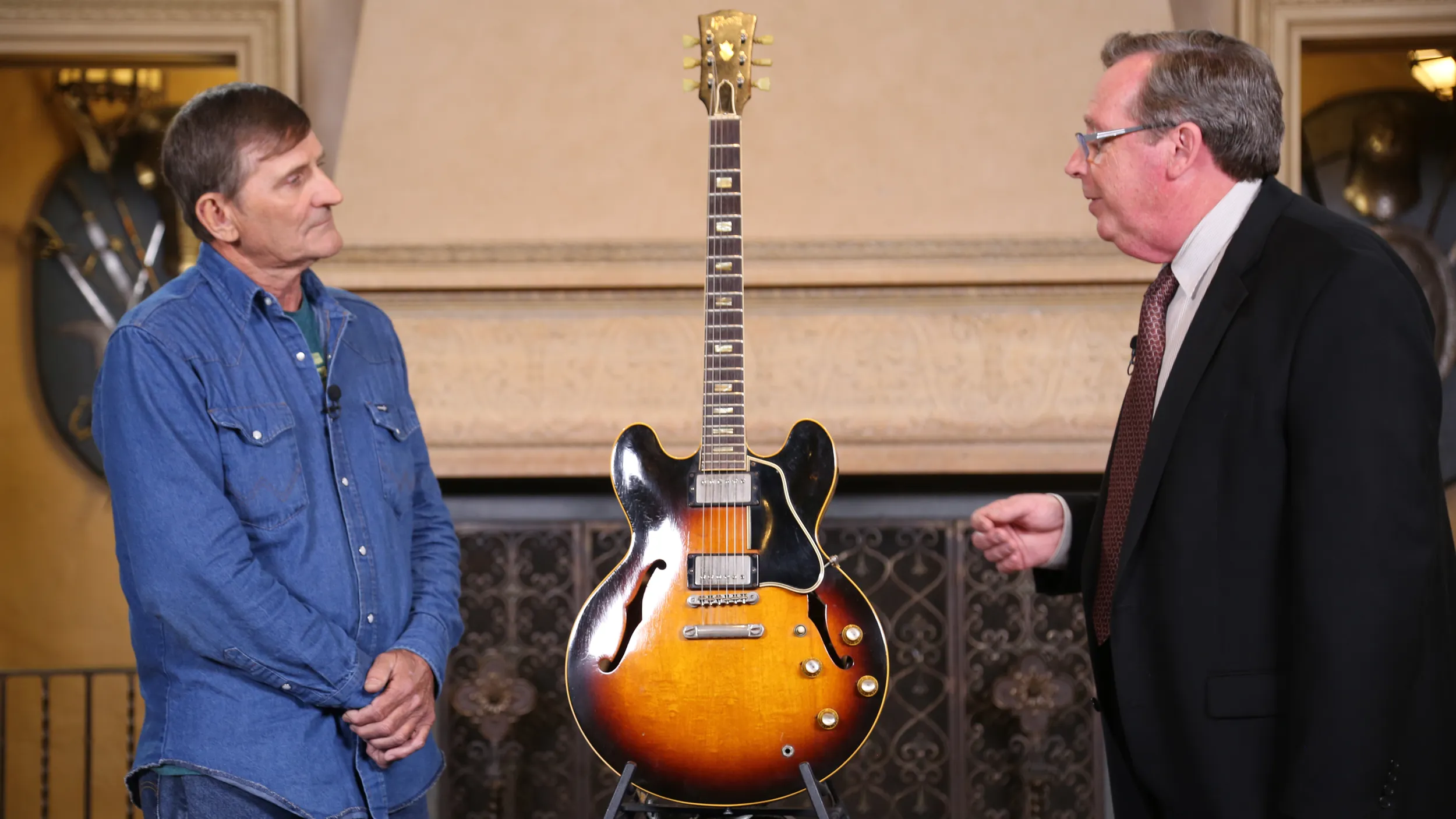APPRAISER: You brought us in this fantastic, ornate trophy, and it's to H.S. Wilcox, your grandfather. He must have done something really good. Tell us about it.
GUEST: It's basically considered to be the world's land speed record at the time...
APPRAISER: Okay.
GUEST: ...for a stock automobile. He won it near Jacksonville, Florida, March of 1911, for driving a car over 89 miles per hour for a mile.
APPRAISER: That's pretty impressive in 1911. So, H.S. Wilcox, also known as "Howdy"...
GUEST: Howdy.
APPRAISER: Tell us a little bit about his racing career.
GUEST: He started racing in 1909.
APPRAISER: Mm-hmm.
GUEST: He raced what is now called IndyCar races.
APPRAISER: Mm-hmm.
GUEST: Ran all of the Indianapolis 500s from 1911 through 1923.
APPRAISER: So, he was in the very first one in 1911.
GUEST: Yes, and he won it in 1919.
APPRAISER: Tell us the circumstances about this particular race and this world record.
GUEST: The cars were being raced on the sand along the beaches...
APPRAISER: Right, mm-hmm.
GUEST: ...on the Eastern Shore of Florida. Basically, they were speed records that they were running.
APPRAISER: Racing goes back to 1895, with the first race in Chicago. And then, you had road races, you had track races, and you had beach races.
GUEST: Beach races.
APPRAISRE: And in the early 1900s, Jacksonville and Daytona Beach were vying with one another to be the beach capital... beach-racing capital of the world.
GUEST: Exactly.
APPRAISER: This trophy was on March 30, 1911, when he broke the record.
GUEST: 40.32 seconds.
APPRAISER: That's right.
GUEST: 89 miles per hour.
APPRAISER: Now, today, that might be us speeding on the freeway.
GUEST: But that's all! (laughs)
APPRAISER: But in those days, can you imagine going on the beach and setting that kind of track record?
GUEST: Yeah, in, in, in basically a, a Model A with a huge engine in it.
APPRAISER: And what I find fascinating, the big name in racing at that time was Barney Oldfield, for American Racing. And your grandfather, Howdy Wilcox, broke his record...
GUEST: Yes.
APPRAISER: ...which must have made him sort of an instant hero. And it had to be a big deal, because they gave him this particular trophy, and it's silver plate. And I know you had this re-silver-plated a few years ago.
GUEST: Yes.
APPRAISER: That does not really affect the value. This trophy was made by the Homan Manufacturing Company, which I believe was out of Cincinnati. What happened to your grandfather? He ran 11 times in Indianapolis, and, unfortunately, he, he passed away in a car crash, right?
GUEST: Correct.
APPRAISER: In 1923.
GUEST: '23. He was 34 when he passed away.
APPRAISER: How old was your mother when he passed away?
GUEST: Two.
APPRAISER: So, she has no memory of him.
GUEST: No. And her mother passed away a year before that.
APPRAISER: So, definitely orphaned.
GUEST: Yes.
APPRAISER: So... but she knew about the legacy from the family?
GUEST: Oh, yes.
APPRAISER: His legacy is not quite as well remembered as some others because he passed away, as a number of racers did at that time. It was a dangerous profession. So, we look at the history of what he did and what he achieved that day. And, interestingly enough, half of the value of this is historical, and half the value is in the... actually the quality of the trophy itself.
GUEST: Okay.
APPRAISER: I would place an insurance value of $15,000.
GUEST: Very interesting-- thank you. It has a special place in, in the home on, at Christmas, but normally we keep it locked up in a bank vault.



